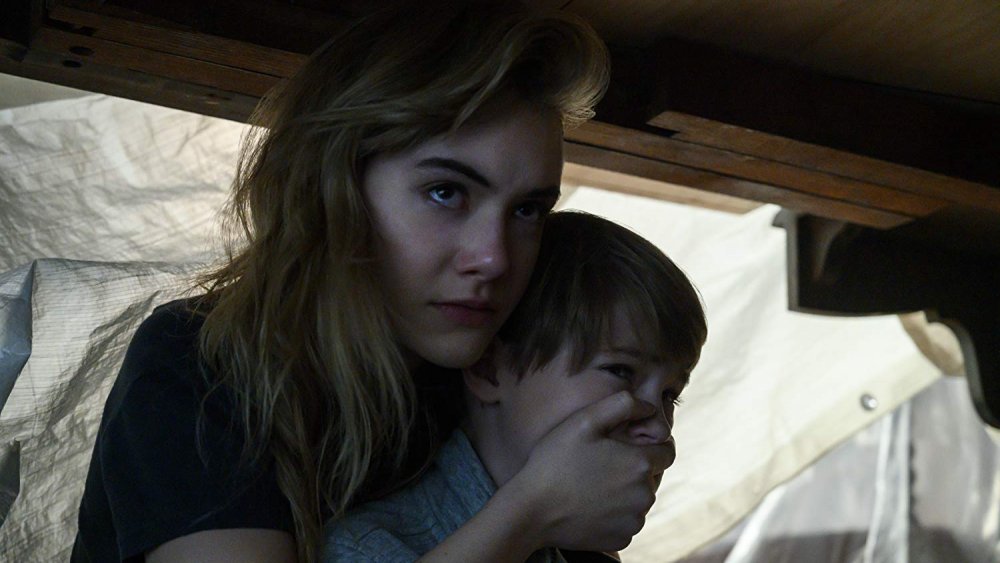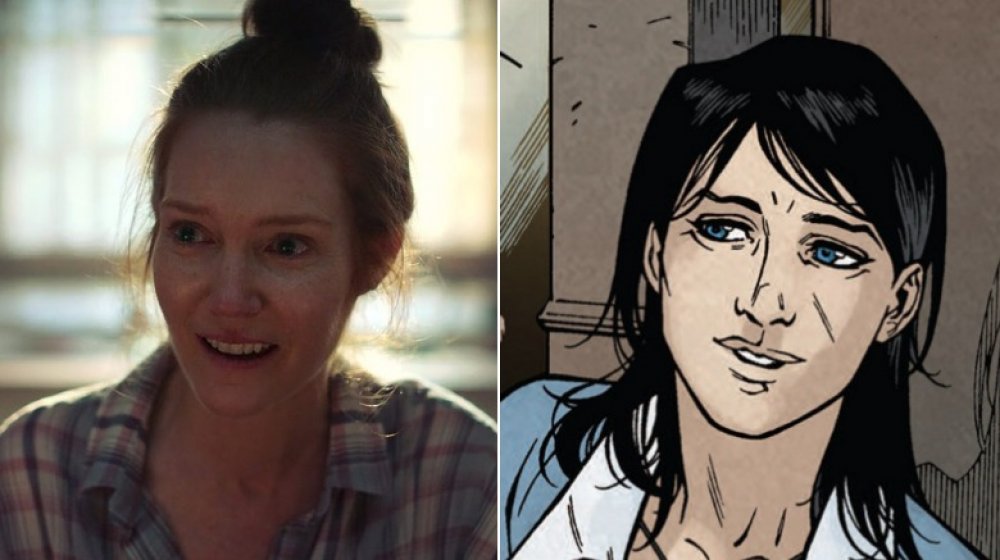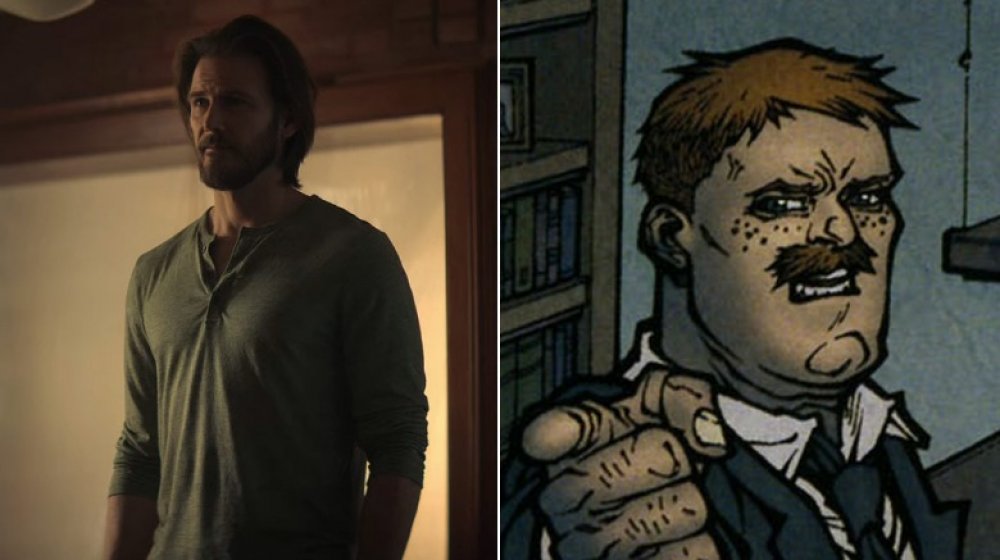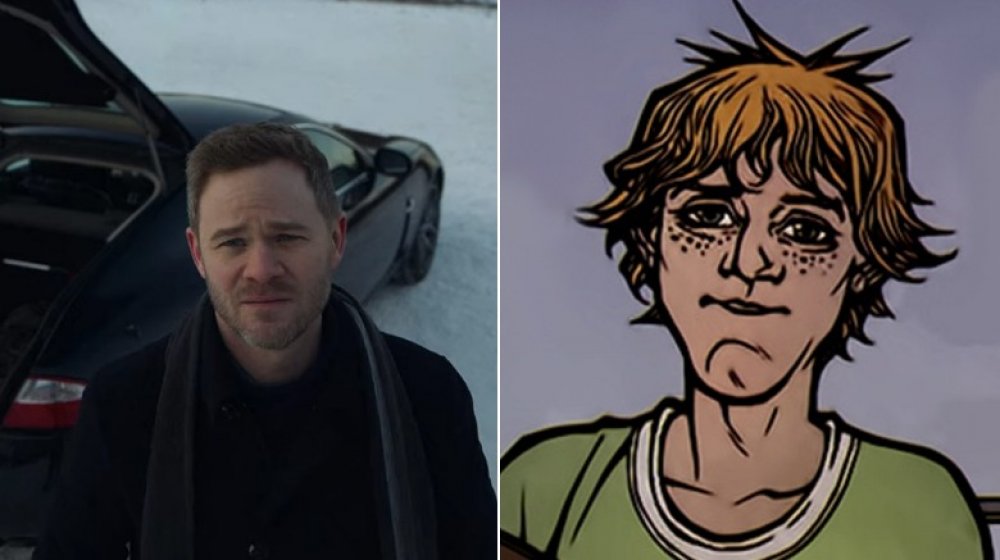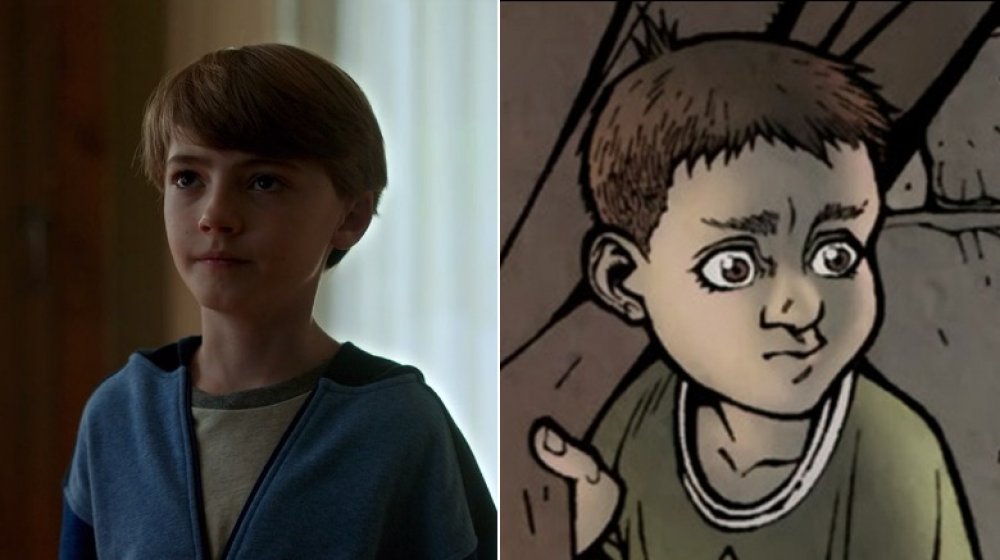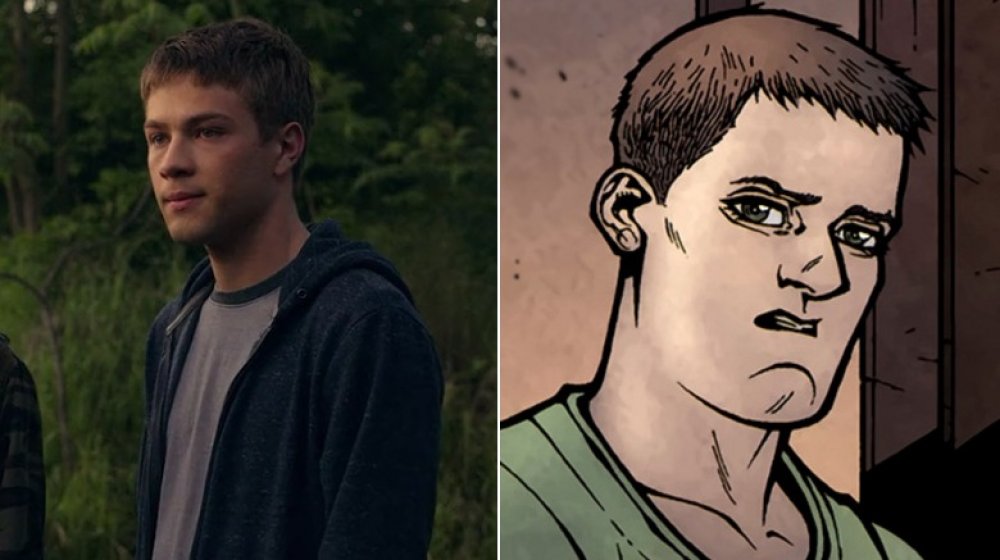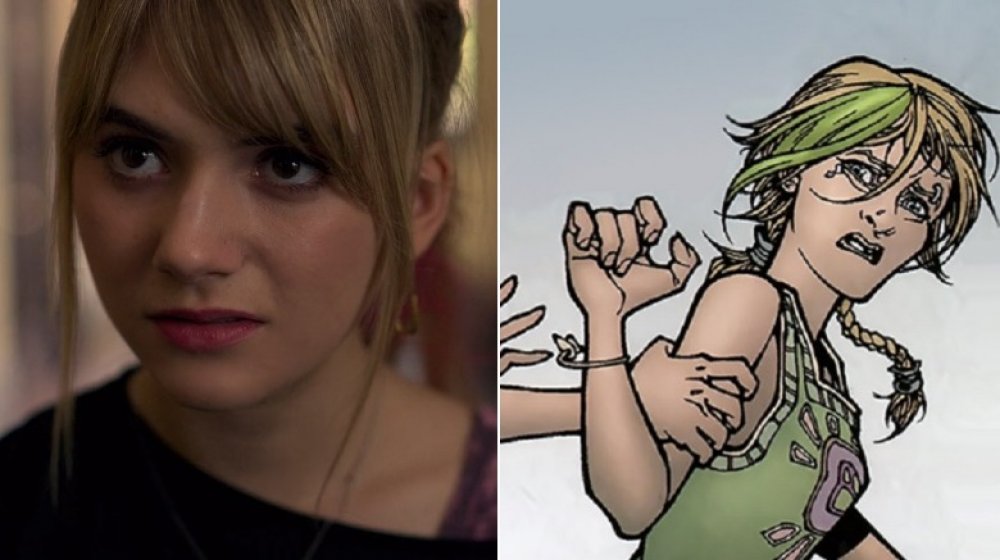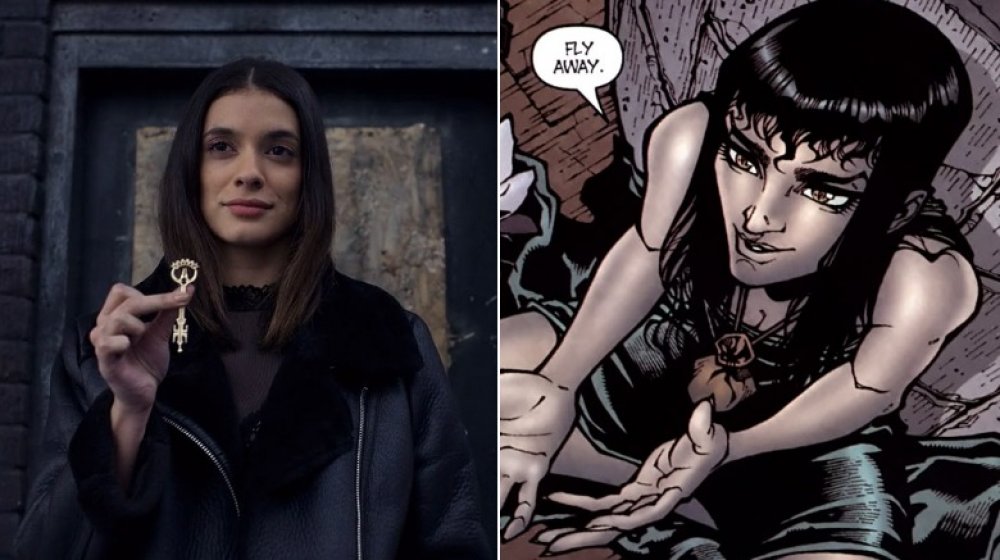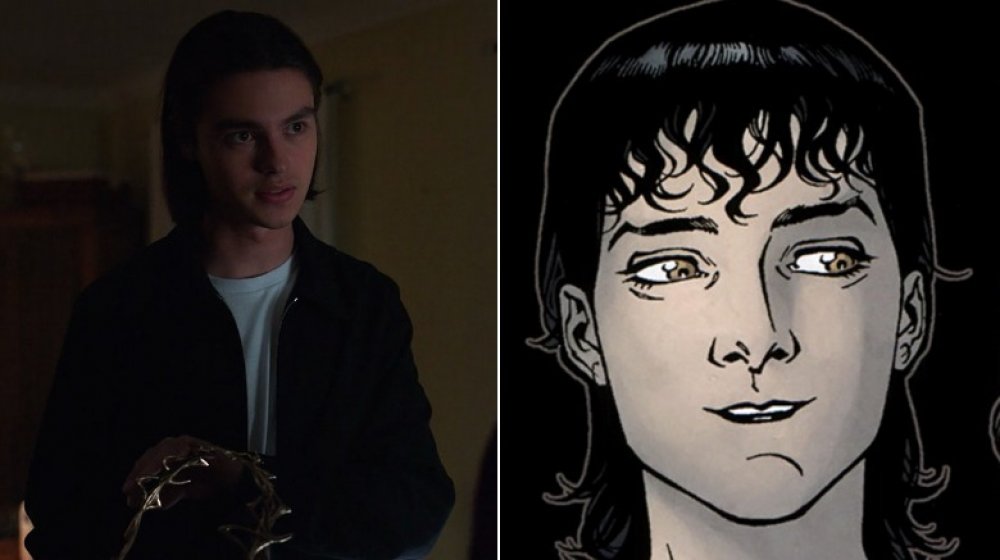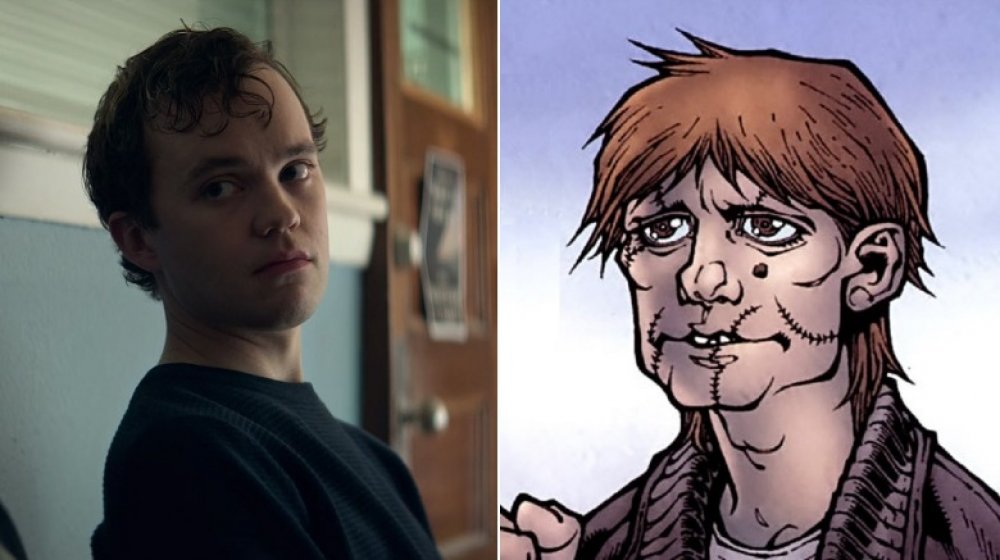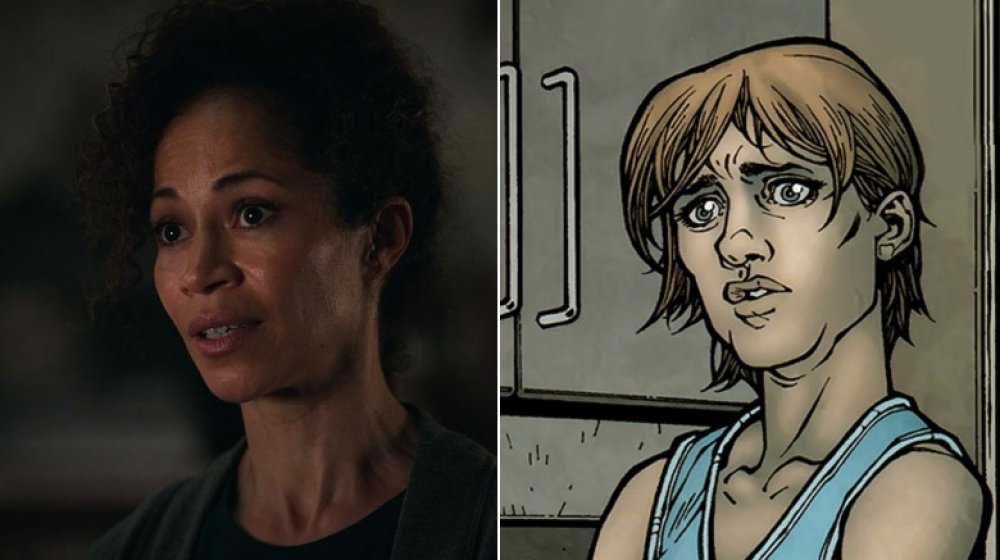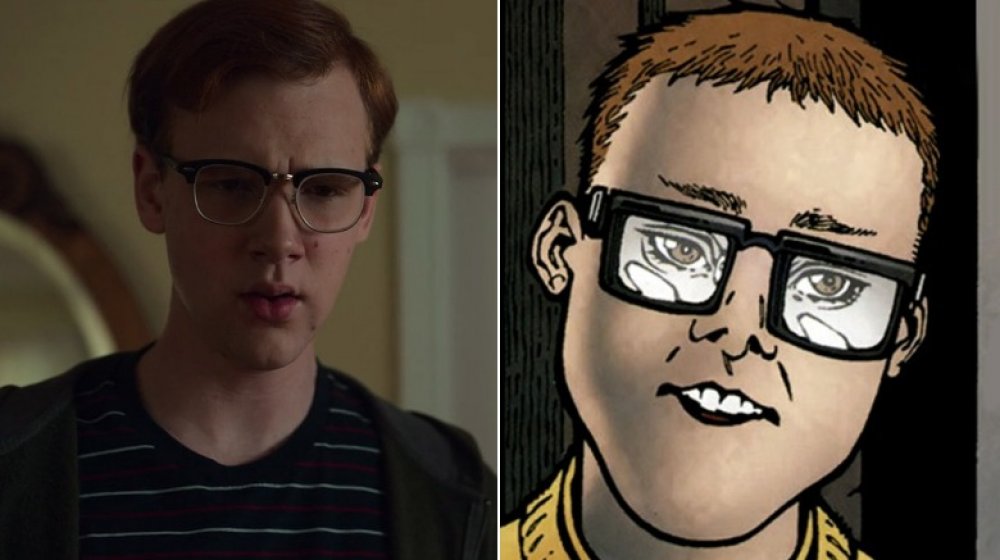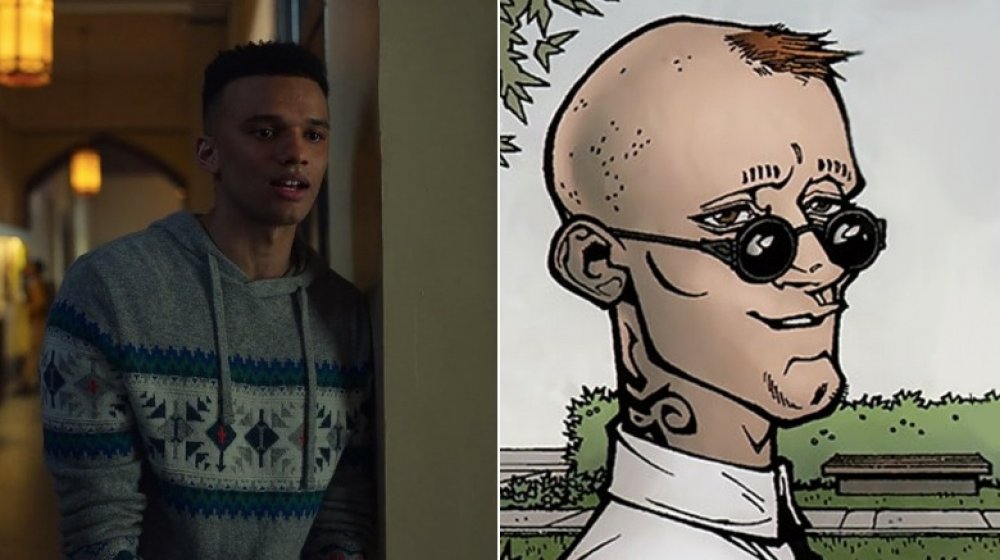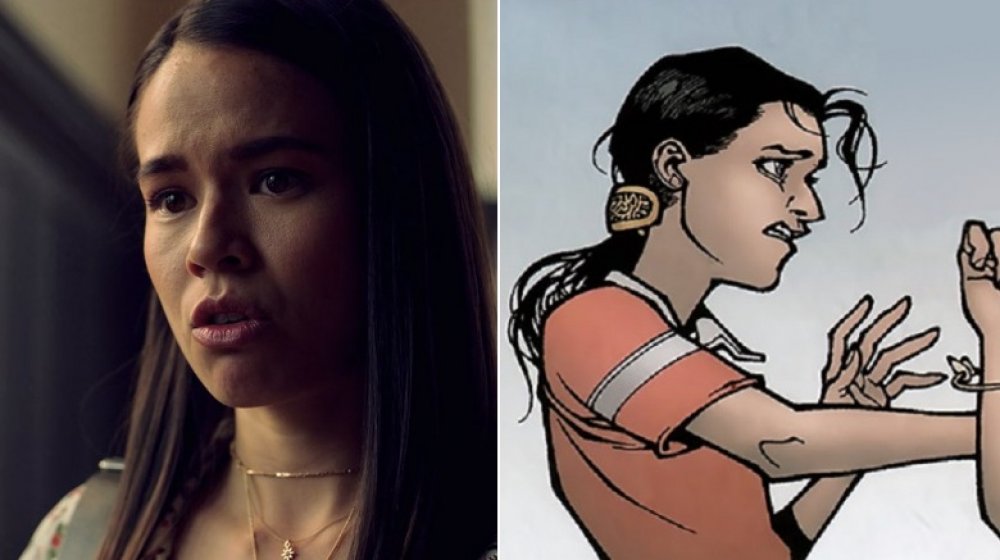How The Cast Of Locke & Key Should Really Look
Locke & Key, based on the beloved comic series by horror writer Joe Hill and artist Gabriel Rodriguez, is Netflix's latest adaptation success story. Though the show does take a few liberties with the source material, it nails what really matters: Capturing the series' signature spookiness. Its execution might be different, but its spirit is very much the same. Fans gobbled up season one as fast as they could, and now await season two of Locke & Key with bated breath.
When it comes to the characters, most look relatively similar to their comic counterparts. This is impressive, considering Rodriguez's angular art style. However, a few of the show's characters deviate completely from the way they are "supposed" to look.
Today, we're comparing the way the show portrays certain characters to the way they look in the Locke & Key comics. We're cutting out characters that didn't appear at all (or at least haven't yet), but most of the mains are accounted for. Keep your keys on hand and let's dive in.
Nina Locke
Darby Stanchfield plays Nina Locke, mother to Tyler, Kinsey and Bode and widowed wife of Rendell Locke. She got quite a character upgrade, all things considered: In the comics, she slips into alcoholism to combat the trauma she suffered during the home invasion that killed her husband, spending most pages unable to understand or cope with what is happening to her children. Though she struggles with alcohol in the show, she is much more capable, and her appearance reflects that.
In the comics, Nina generally looks haggard. Her black hair is frequently disheveled, and her eyes are often only partially open. Stanchfield's version of the character still struggles to cope with the supernatural events around her, but she generally appears much more put-together than her comics counterpart. In terms of their features, their faces are shaped very similarly, but their hair is entirely different: Show-Nina has red hair, while comics-Nina has black hair.
Rendell Locke
Rendell, keeper of Key House's mysterious secrets, underwent one of the most dramatic page-to-screen transformations of the entire cast. In the Locke & Key comic, Rendell is depicted as a big, beefy man with a small red mustache and short, disheveled hair. He looks extremely similar to his oldest son, Tyler, with small freckles under his eyes and a large chin to match his hulking frame.
In the show, Rendell is played by Bill Heck, rendering the character entirely different. He has a slender frame, a full beard and long, well-kept hair. Moreover, Heck does have a look that has a bit more of a stereotypical "guidance counselor" vibe. Though choices were made that distanced show-Rendell from comics-Rendell, the truth is that no one could have brought comics-Rendell's exagerrated proportions to accurate life.
Interestingly, Heck does have a similar facial structure to Connor Jessup, who plays his son, Tyler. Even though they changed the character's look a bit, the show did manage to find two actors who could believably be father and son.
Duncan Locke
Rendell's brother and uncle of our central trio of children, Duncan Locke was changed quite a bit from the comic to the show. Funnily enough, actor Aaron Ashmore's rendition actually looks a bit closer to how Rendell is portrayed in the comics than his own character.
In the comics, Duncan is skinny, with long limbs and a pointed, angular face. Like his brother, he has freckles under his eyes and unkempt red hair, but their body types are totally different. On the show, Duncan is not huge, but he is definitely much more filled out and better groomed than he is in the comics. He is also approximately the same size, if not a bit bigger, than his brother — something that is absolutely not the case within the comics' pages.
Bode Locke
Bode, the youngest of the Locke children, starts the story off by releasing the mysterious Dodge from her well. Jackson Robert Scott, who already had plenty of horror experience from working on It, The Prodigy and Fear the Walking Dead, brings the right level of wonder and fear to the mysterious happenings of Key House. He also looks like the comics version of Bode walked right off the page.
The only real difference is negligible — comic-Bode's hair is a bit shorter than the Netflix version's, and, like his dad and his uncle, it is frequently sticking up at all sorts of odd angles. Show-Bode has slightly longer hair that lays flatter on his head — an appropriate choice, as it looks much more like his onscreen father's.
Otherwise, the two have similar eyes, similar facial structure and similar builds. If they were only casting on how close the actors look, Jackson Robert Scott would be a slam dunk. Luckily, he has the acting chops to thrive in the role as well.
Tyler Locke
Tyler Locke, eldest of the three Locke children, is a relatively straightforward transformation from the comics to the show. Tyler is played by Connor Jessup, who bears a real resemblance to his on-screen father. Generally speaking, Tyler isn't as much of a 100% depiction as his younger brother is, but he's pretty close to the general idea of the character.
In the comics, Tyler is built like his father: Bulky, muscled, imposing, especially when compared to the skinny figures of his uncle, mother and siblings. He isn't nearly as massive as his dear old dad, but he is definitely built like a hockey player.
On screen, Tyler is also built differently from the rest of his family — it just isn't as dramatic as it is in the comic. Both iterations of the character have similar hair as well as facial features and structure, show-Tyler just isn't as exaggerated as comics-Tyler.
Kinsey Locke
Emilia Jones, who plays Kinsey Locke on Locke & Key, looks remarkably like her comic character. Jones's version has a few stylistic differences, but she still carries an uncanny resemblance to the original illustration.
The big differences between the two come from Kinsey's hair and body modification preferences. In the comics, Kinsey has many different hair styles that are not always reflected in the Netflix version — in the first issue of the comic alone, she wears dreadlocks, a shock of green hair, and intricate braids at different times. She also has an eyebrow piercing, and wears considerably baggier clothes. She changes rapidly, almost senselessly, always seeking to define herself anew.
In the show, Kinsey's hair is a bit more consistent — fitting, since rebelling against her mother isn't as important to her as it is in the comics. Other than those small details, however, Kinsey on the small screen is extremely close to her comic incarnation.
Dodge
Considering Dodge's otherworldly nature, the Netflix show could have taken a lot of liberties with what to do with the character. Instead, they cast horror veteran Laysla De Oliveira, who has an eerie resemblance to the demonic force that lives in Key House's well.
Dodge has black hair, is extremely thin, and carries herself (itself, really, but we'll go with herself considering how Dodge generally appears) with a catlike level of agility. De Oliveira captures all of that; she is lithe and seductive in the way she walks and talks, her hair and moves as sinuous as her comic incarnation's. Considering what a frightening presence Dodge turns out to be, it's a pretty remarkable job De Oliveira does in capturing the essence and look of the character.
The only major difference is that the Dodge of the comics looks ... different. She isn't outwardly demonic, but Rodriguez illustrates her with a sharper line and greater degree of contrast than other characters, highlighting her strange nature. For most of the Netflix series, Dodge looks just like everyone else — it's the way she acts that gives away the game. Plus the whole living in the well thing.
Lucas
Dodge's vessel into our world, Lucas Caravaggio was once a friend to Rendell and Duncan Locke. However, he was possessed by the demon during an experiment with the keys, and Dodge has been seeking new ways into our world ever since.
In the comics, Lucas and Dodge look extremely similar, just as they do in the show. Felix Mallard plays Lucas on the Netflix version of Locke & Key and he and Laysla De Oliveira truly could pass for siblings. Both versions have black hair and angular faces, and their body types are similar.
As is the case for Dodge, the big difference between show-Lucas and comics-Lucas is the way his hair appears. In the comic, his black hair is twisted and hangs in front of his face most of the time. It alerts the reader to the fact that something is off with the character. In the show, Lucas has long, well-groomed hair, keeping him in line with the rest of the characters.
Sam Lesser
Sam, Rendell's student and eventual murderer, is played on the Netflix series by Thomas Mitchell Barnet. For the most part, he has a similar build, style and appearance as his comic version. However, the show makes a dramatic change that is immediately apparent to anyone who has read the original comics series.
In the show, after Sam kills Rendell, he is knocked out and quickly apprehended. In the comic, he stalks Tyler, taunting him as he searches through the cellar to kill him as well. Tyler ambushes Sam and bashes his head in with a brick, nearly killing him. Although Sam survives, he is physically maimed by the incident — every appearance afterward shows Sam with stitched scars criss-crossing his face. Even if he had emerged from Dodge's thrall, his scarred face would always have showcased the violence he had comitted.
In the show, Sam still looks relatively normal, even after escaping his prison cell. A lot of the horrific imagery of the comic was toned down for the series; this is definitely one of those elements.
Ellie Whedon
One of a few characters who swapped race in the transition from comic to show, Ellie Whedon is played by African-American actress Sherri Saum on the Netflix series. On the show, Ellie is tall and skinny, with short, curly black hair that she frequently ties on top of her head.
In the comics, the big difference is that Ellie is white. She has a prominent chin and stands about a head shorter than Rendell — granted, in the comics, Rendell towers over nearly every other character. Ellie seems to alternate between blonde and light brown hair, depending on what age she is depicted as.
As an adult, comic-Ellie looks older than her years. She has many lines on her face, as though she spends most of her time pinched with worry. Considering the stressful events the character has been through, it's an understandable aspect of her appearance. Saum is the right age for the character, but she definitely looks like she hasn't been through as much as her character has — or at least, as though she's gotten through it more intact.
Rufus Whedon
Rufus is pretty similar between the comic and the show, but a few things about his appearance and mannerisms are slightly altered. The Netflix series cast an actor with autism, Coby Bird, to portray the character, and though his specific disorder is never actually named in the comic, it certainly could have been autism.
In the comic, Rufus has red hair and wears glasses, just as he does in the show. His glasses are slightly different — in the comic, Rufus' glasses are big, thick squares, reflecting a lot of light and making his facial shape hard to see. In the show, Rufus' glasses are toned down a bit, and are stylish according to current norms.
Another aspect that changed a bit is that the comic version of Rufus has protruding buck teeth. In nearly every panel Rufus appears, his top teeth stick out over his bottom lip. In the show, Rufus' buck teeth are nowhere to be found.
Scot Cavendish
Scot (yes, one t) undergoes the biggest change from comic to screen. His appearance is not the only thing that is different, in fact — even his last name changes! In the comics, he's Scot Kavanaugh, while his last name is Cavendish on the Netflix series. This name change may be due to the differences in the character, as show-Scot is more of an "inspired by" sort of character than a direct interpretation.
In the comics, Scot is a tall, skinny student. He is white and heavily tattooed, with just a small shock of hair sticking forwards on the top of his head. He almost always wears small, round sunglasses.
In the show, Scot is black with a fade haircut. He wears a lot of retro clothing, which still fits the quirky style of the character, but in a much different way than the corporate-chic Matrix villain look his comic counterpart sports. Comic Scot is perhaps the most "comic book" character of the series, so it makes sense that they would change his appearance so much.
Jackie Veda
Jackie is a fairly spot-on recreation of the character as she exists in the comics. Comic-Jackie is built almost exactly like Kinsey — a detail you can spot when the two are racing against one another on the track team. She is skinny and has long, black hair that she frequently ties back in a ponytail. Show Jackie lets her hair hang naturally more often, but it is the same color and roughly the same length. She also has a very similar body type to actress Emilia Jones, who portrays Kinsey.
Clothing-wise, she dresses differently from her comics counterpart, preferring a slightly more glamorous look. Comic-Jackie tends to keep her look sporty, and practical, eschewing most accessories and favoring the sort of garments she can move easily in. Generally speaking, though, actress Genevieve Kang is a perfect match for Jackie Veda, much to the delight of fans everywhere.
